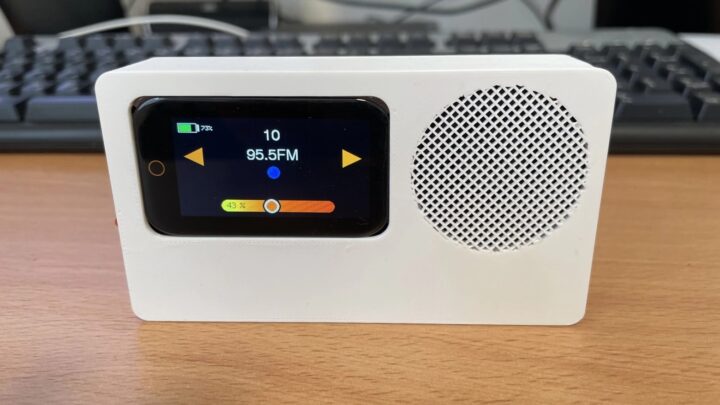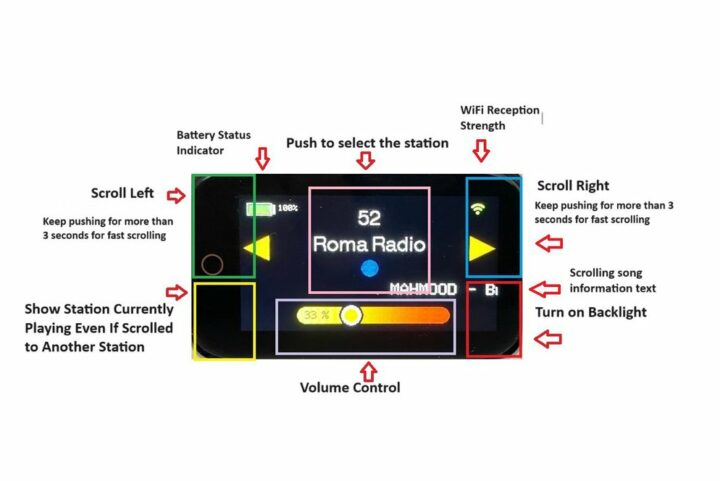The ESP32 Internet Radio from Poland-based maker, The MicroMaker, is a simple hardware kit that combines the LilyGo T-Display S3 Development board with an I2S audio breakout module and other components to form a radio that can access and stream from online radio stations. With the ESP32 Internet Radio, you are not limited to the radio stations available in your immediate vicinity.
It is powered by the LilyGo T-Display S3 which integrates the network-capable ESP32-S3 microcontroller (Wi-Fi + BLE 5), a 1.9” full-color capacitive touchscreen display, and two programmable buttons. The ESP32-S3’s integrated Wi-Fi capability allows the radio to connect to the Internet, and the touchscreen brings an intuitive and easy-to-use interface to the device.
It supports up to 512 stored radio stations, and you can manage these stations from a web browser on your PC or mobile phone.
The Internet Radio can be powered by an 18650 Lithium-ion battery for portable applications. We have recently covered various other interesting projects powered by the ESP32-S3 microcontroller such as the ThingPulse Pendrive S3, M5Stack CoreS3 SE, T-Camera S3, and the Air Quality Sensor.
ESP32 Internet Radio specifications:
- Development Board – LilyGo T-Display S3 (Touch Soldered Version H589) with
- Espressif Systems ESP32-S3R8 microcontroller
- 16MB flash, 8MB PSRAM
- 1.9-inch LCD color screen and two programmable buttons
- SparkFun I2S Audio Breakout module with MAX98357A (3W Class D Amplifier + DAC)
- 40mm 4ohm 5W speaker
- 18650 Li-ion battery and battery holder (optional)
The Internet Radio is not open-source. The precompiled firmware is hosted on OneDrive and can be flashed onto the microcontroller using Espressif’s Flash Tool, but you will need to activate it with a product key from the maker. It is listed on Tindie for about $10.
The hardware kit itself is currently priced at $95, and includes a LilyGo T-Display S3 module, the SparkFun I2S Audio Breakout module, a 5W speaker, a battery holder, a Wi-Fi Antenna, an enclosure, and other components. A hot glue gun is required for assembly, but buyers can opt for the pre-assembled version for $30 extra. If you decide to build the Internet Radio yourself, you will be able to swap any component with a better replacement, except for the LilyGo T-Display S3.
It is important to note that the ESP32 Internet Radio does not have a radio antenna and is unable to receive local radio transmissions. More detailed instructions about installation, setup, and usage are available in the GitHub repository for the device.

Tomisin is a writer specializing in hardware product reviews, comparisons, and explainers. He is very passionate about small form factor and single-board computers.
Support CNX Software! Donate via cryptocurrencies, become a Patron on Patreon, or purchase goods on Amazon or Aliexpress






